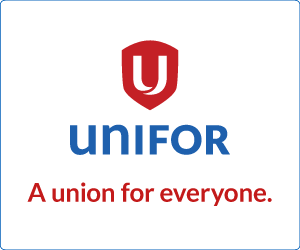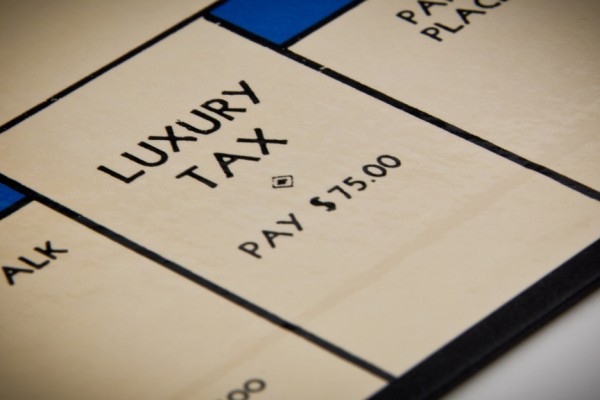Canada’s five giant banks ought to be nationalized, not bailed out
On the need for a public alternative

Photo by DRheaume/Flickr
Canada’s banking system is on the edge of a crisis, once again, with a collective debt of $1.8 trillion—and the public will be on the hook for most of it, sooner than most think.
Last week, the Bank for International Settlements (BIS) revealed that Canada, Hong Kong and China’s banking systems are the world’s most at-risk of a severe crisis. BIS joins the International Monetary Fund, Moody’s and S&P Global Ratings in warning record-high consumer debt could tank Canada’s “five giants” in the case of a downturn. The Bank of Canada’s Senior Policy Director, Gino Cateau, calls such debt the Canadian economy’s “key vulnerability.” The post-2008 lending surge, which boosted consumer spending to keep the economy afloat, has driven many to the edge of insolvency. Ipsos, for example, found 52 percent of Canadians are $200 from bankruptcy by the end of an average month.
We’ve seen this before. Leading up to 2008, Canadians had about the same debt-to-income ratio as Americans. And, when the recession struck, Canada’s five giants faced insolvent borrowers and the federal government bailed them out. Most of the money came from the Canada Mortgage and Housing Corporation, which bought loans that soured, but total support peaked at $114 billion. At around seven percent of Canada’s 2009 GDP, Canadian Centre for Policy Alternatives (CCPA) economist David Macdonald notes, it would’ve been cheaper to buy most of the banks.
Here’s a breakdown:

“Regulators have not demanded any real changes to Canadian lenders’ equity since then,” said Richardson GMP Financial Advisor Hilliard Macbeth. He anticipates the next crash will be larger than the last.
According to Macbeth, though 40 percent of mortgages are “backed by the taxpayer” through the CMHC, higher debt means Canadian banks need a 40 percent increase in tier-one capital to be safe (extra capital available to absorb losses). Even if the banks agreed to that, he says, “that would just put Canada’s banks on par with the Italian and German banks everyone is worried about. They have at least 30 percent more capital on reserve than the best Canadian bank.”
Bank executives responded to the last bailout by increasing executive bonuses (to the tune of millions of dollars between 2008 and 2009), closing branches (especially in poor and rural areas), laying off employees and engaging in the same over-lending that necessitated 2009’s bailout. With another crisis brewing, there’s no indication the same won’t transpire again.
It’s no surprise, then, that some on the left are suggesting a public sector alternative. One that’s publicly-controlled rather than just supported by public funds.
The most important version of this is Postal Banking. This idea has been adopted by the CCPA, the Canadian Union of Postal Workers and the NDP left (notably Niki Ashton in an awful Canadaland interview). It proposes to make up for the closure of 1,700 bank branches and hundreds of credit unions since the 1990s by providing banking services, through Canada Post. That, Macdonald argues will allow the federal government to pool the resources of Environment Canada, Farm Credit Canada, the Status of Women, Indigenous Affairs and the like to serve communities not served by the private banking system.
That’ll help ensure socially-useful investments are made, even if they aren’t lucrative. It’ll also provide a public alternative to payday lenders and other shady actors.
A rationally-planned banking system is an attractive alternative to the Bay Street madness described above. It’s also been proven to work. At its peak, Canadian postal banking managed $1 billion in deposits and other countries still use it to provide a range of services.
In addition, postal banking is popular: CCPA cites a Strategic Communications poll that found two-thirds of Canadians support Canada Post providing revenue-generating-services like “bill payments, insurance and banking.”
It’s also utopian.
Starting a public bank would require a large pool of money to lend. With Canada Post facing cuts, that sum is unlikely to land in its lap anytime soon.
As well, it’s highly unlikely a Liberal or a Tory government would introduce a new service challenging the publicly-secured-five-bank-monopoly that hired many of its sitting members.
Moderation, therefore, offers no solution. Neither Bay Street nor its political representatives will ever be convinced the wealthy should be obligated to part with their money so their monopoly can be challenged by Canada Post.
Therefore, any measure to introduce a public banking alternative would have to be proposed by an NDP government; against austerity and as a direct challenge to Bay Street’s monopoly.
At that point, it’s better to save the money we will have to spend bailing out the banks, when the crash comes, by making them public utilities.
Then, the five giants’ enormous cash reserves can be rationally-invested and democratically managed as only possible, the CCPA argues, under public ownership.
Mitchell Thompson is a writer and journalism student living in Toronto.










